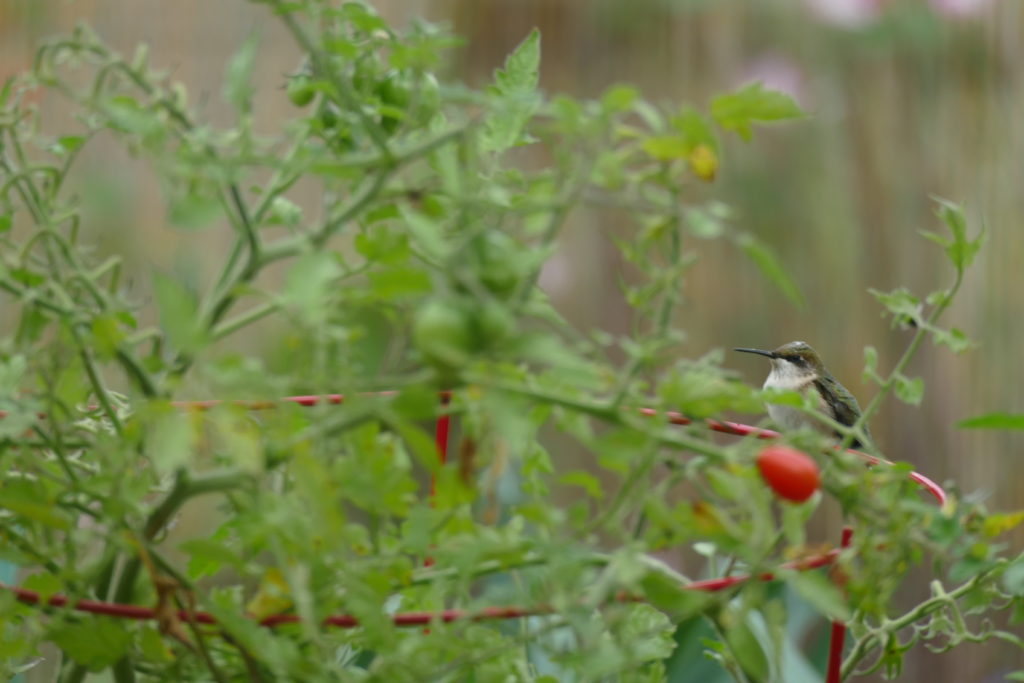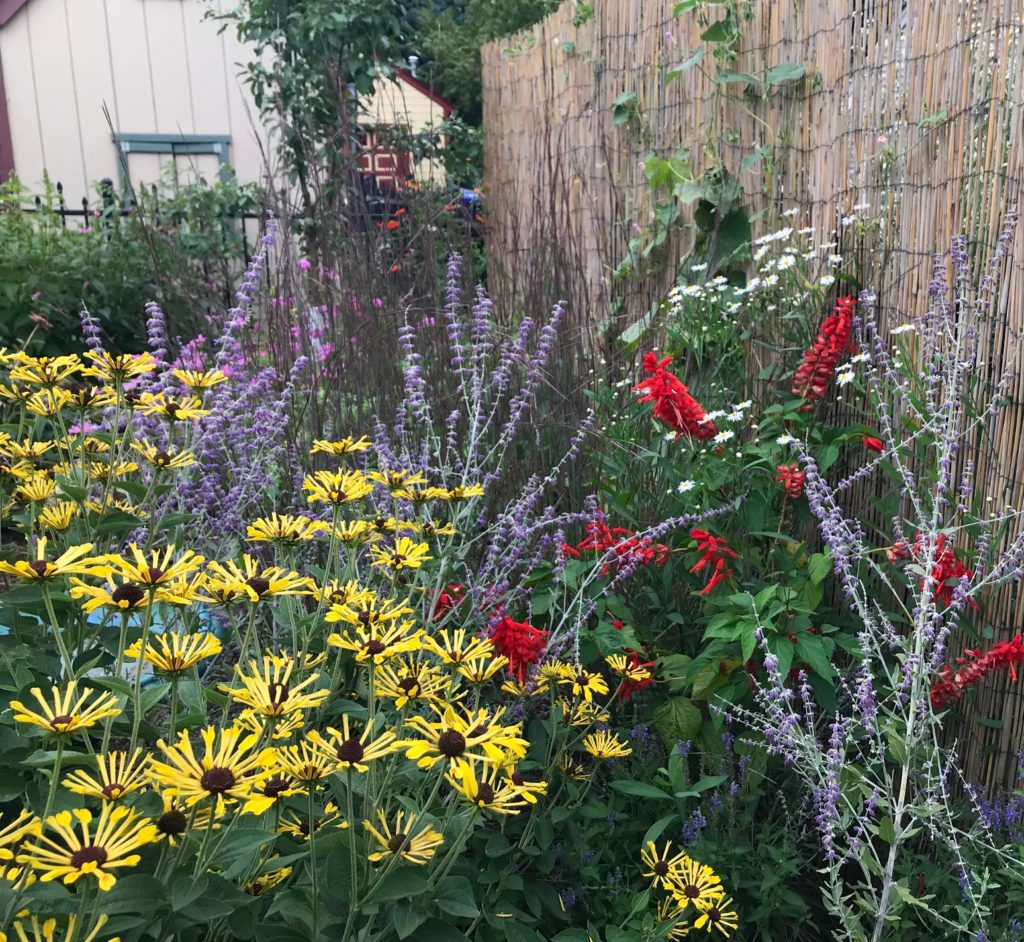This morning, I was looking out the second story window over my insectary garden watching two hummingbirds. The birds had landed on a tomato cage near the garden and sat next to each other for more than a minute in companionable repose. Then, they flitted off together, stopping first at the nearby salvia, then at one of the last flowers on my cucumber vine and finally at the tall false aster (Boltonia) at the back fence before they flew off. They’ll be back, because these hummingbirds love my insectary garden as much as I do.

What is an insectary?

An insectary is a garden filled with native shrubs, trees and mostly perennials. It also has a mix of annuals of all types and herbs, all of which insects, birds and butterflies find highly attractive. The garden is pesticide free, and the idea is to bring in all the insects with plants they love and let them duke it out! Because there are many more “good” bugs than bad ones, you’ll end up with a healthier garden that is positively humming with life.
I first heard about insectaries from Jack Falker, a Minnesota rose grower, who decided he wanted to grow roses without as much spraying as is usually necessary. He blogged about starting an insectary and the number of predatory insects that the insectary brought in. Jack was interviewed for this article in the July/August 2019 issue of Northern Gardener by Rhonda Fleming Hayes. Insectaries are great for roses, but also terrific for nearby vegetables gardens and just generally promoting garden health.
From Garage to Pollinator Haven
My insectary is located in an area that once was home to a one-car garage on our property. The dirt was a disaster! I added raised beds to plant vegetables and herbs in and began planting native and other resilient perennials, because I figured they could handle the poor soil. A second space on the other side of the garage area is home to a variety of annuals.
The insectary includes a small, very slow growing pine, a heritage crabapple tree and some of my favorite perennials and grasses: turtlehead, penstemon, rudbeckia, little bluestem, Russian sage and false aster. Some veronica that I got as a freebie that I never thought would survive bloomed like crazy in its second season! Annuals such as salvia (lots of salvia), nasturtiums and marigolds are part of the garden, and on the edge of the garden I planted the biggest monarch magnet of them all, Mexican sunflower. (After seeing how many monarchs I had last summer, my across-the-alley neighbor asked for some starts, so she has it growing as well. Every monarch in St. Paul knows about our alley!) I grow herbs, too, especially dill, oregano, basil and mint—all of which bees love.
Does it bring in the bugs?
Boy, howdy, does it ever! From the time the first blooms come up in mid-May to November, the garden is buzzing with activity. Many of the insects are ones I don’t recognize but those I do know include many types of bees, dragon and damsel flies, grasshoppers, syrphid flies, swallowtail, painted lady and monarch butterflies, plus moths in yellow, white and brown. The birds adore the place, and most days I have a swarm of wrens in the garden, plus goldfinches, cardinals, mourning doves and robins and, of course, the hummingbirds who seem so at home in the garden.
Do I like every visitor to the insectary? Not really. I had an infestation of oleander aphids on a new planting of milkweed that I put in this year. I hosed them off a few times, but then they kind of disappeared. My guess is someone ate them, and the milkweed looks fine now. You have to be willing to step back and let the insectary do its thing.
I’m really excited about how well it has grown this year and how many bugs and birds it is attracting. Plus, I had one of my best year’s ever in the vegetable garden. I’m not sure the insectary played a key role in that (lots of rain was probably a bigger factor) but any plant that needed pollination sure got it!
Hi Mary, this is my kind of garden. Your video is wonderful too.
Thanks, Joanna!
Your article and YouTube is so interesting. You do good work and enjoy doing it. Thanks for sharing this.
Thank you!